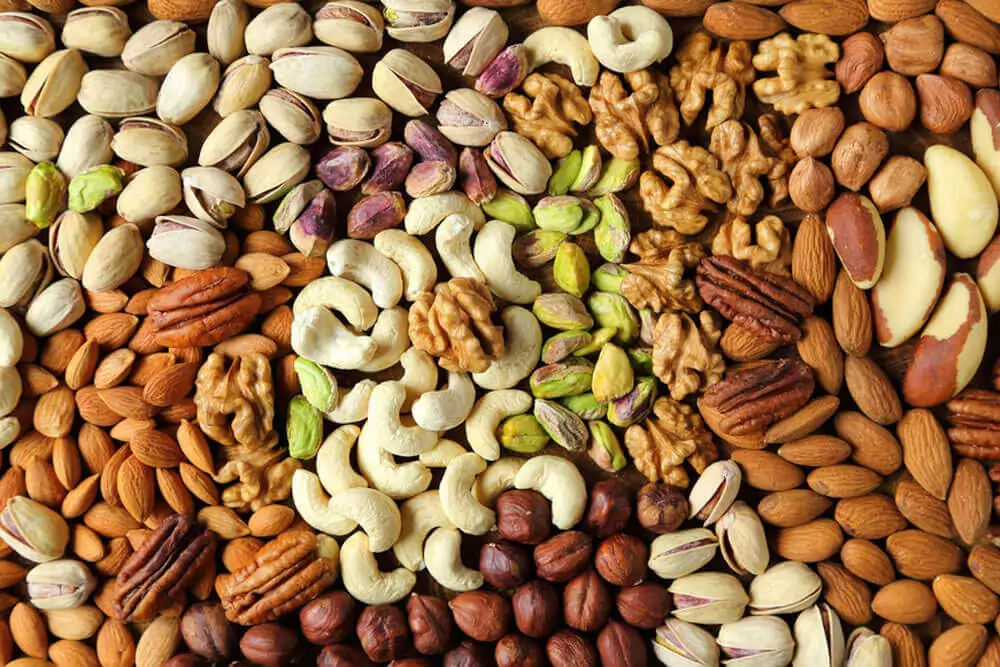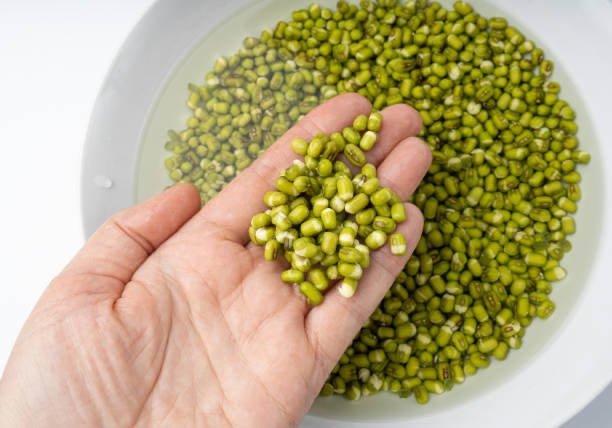Water Walking!
The Amazing Benefits Of Water Walking!
Many people have problems with their back, knees, hip joints, ankles and heels; many people are recovering from injuries or surgeries to the back and the lower limb joints, that make it difficult and painful for them to walk on the ground or floor or on a treadmill.
They have a wonderful option to walking on the ground or floor or on a treadmill.
And that is water walking!
***
Water exerts an upward force on any object in it.
This force is called buoyancy and it counteracts gravity.
This force reduces the effective weight of the object in water.
When a person is in water, buoyancy helps reduce the weight of the person directly proportional to the depth of water and how much a person is submerged in water.
In waist-deep water, about 50%, in chest-deep water, about 75% and in neck-deep water, up to 90% of body weight is offloaded, greatly reducing stress on joints when you walk or move around in water.
Because of this, water walking becomes a low-impact exercise that can be performed in a swimming pool.
It should be done in at least waist deep or better in chest deep water so the water buoyancy reduces the effect of our body weight on our joints while water offers greater resistance to our muscles when we move in water.
It involves walking forward, backward and sideways, sometimes with added resistance tools like water weights or foam noodles.
***
Benefits of water walking:
Low impact on joints: The buoyancy of water reduces stress on joints, making it ideal for people with arthritis, joint pain, or injuries.
Enhances muscle strength and endurance: Water resistance engages multiple muscle groups, improving strength and tone.
Improves cardiovascular health: Walking in water increases heart rate and circulation and thus it can become a low impact cardiovascular exercise even while being gentle on the body.
Burns calories and aids in weight loss: Water walking helps burn calories effectively while being easier on the body than land exercises.
Boosts flexibility and balance: Water resistance helps improve stability, coordination, and flexibility.
Reduces mental stress and improves mental health: Exercising in water has a calming effect, reducing stress and promoting relaxation.
Suitable for different fitness levels and conditions: It is suitable and beneficial to the aged people, to those recovering from an injury or surgeries, pregnant, or those looking for a low-impact workout, almost anyone can benefit hugely from water exercises.
It can be done casually without a trainer or as part of a structured workout with varying speeds, resistance tools, or interval training, guided by an expert trainer.
***
Diseases which water walking can play an important role in recovering from or controlling better:
Water walking can be of great help in overcoming or help in reversing or controlling of coronary heart disease, diabetes and in rehabilitation of diseases like osteoarthritis knees, low backache, hip, ankle injuries, post surgical rehabilitation in joint and spine surgeries, post stroke recovery, illnesses rheumatoid arthritis, fibromyalgia, and Parkinson’s disease.
***
Preparations for beginning water walking:
Choosing the right pool:
Select a pool with steps to climb down in the pool. A pool with only ladders to climb down may not suit people having limited joint mobility and pain.
Select a pool with proper water filtration and chlorination facilities.
Select a pool with adequate depth to be able to walk in chest deep water, for the best balance of resistance and buoyancy.
***
A note of caution:
Most pools will have wet flooring around the pool and can be slippery and the elderly or people recovering from injuries or surgery can slip and fall on such floors. Ensure that you have a companion who can escort you around the pool.
***
Water temperatures:
Water temperatures in cold climate cities may be too cold in winter and it might not suit painful joints to exercise in it, other than that, swimming pool water temperature in India is soothing on joints most other time.
***
Swimwear gear:
Wear proper comfortable swimwear clothing, a cap and pool goggles and water shoes.
***
Basic Water Walking Technique:
Stand tall with good posture.
Step forward heel to toe, engaging core muscles.
Keep arms moving naturally, or use them for resistance by pushing against the water.
Walk forward, backward, and sideways to engage different muscle groups.
Maintain a steady, controlled pace.
***
Workout Plan for Beginners (20 to 30 minutes total)
Warm up (5 Minutes):
Walk at a slow, steady pace to get used to the water.
Main workout (15 to 20 Minutes):
Forward walking: 5 minutes at a moderate pace.
Side steps: Walk sideways both sides for 6 minutes to engage inner and outer thighs.
Backward walking: 3 to 5 minutes to improve balance and coordination.
High knee raise: 2 to 3 minutes for strengthening the core muscles and cardiovascular boost.
Cool Down (5 Minutes):
Walk at a slow pace and stretch in the water.
You can increase pace and time of exercise as you get fitter and healthier!
Also read the article ‘Walking To Be Slim And Healthy!’ on this website.
***
वॉटर वॉकिंग!
वॉटर वॉकिंगचे जादूई फायदे!
आज अनेक लोक कंबर, गुडघे, हिप हे सांधे, घोटा आणि टाच दुःखी मुळे, किंवा मणक्यांच्या किंवा ह्या सांध्यांच्या दुखापती किंवा सर्जरी नंतर च्या वेदनांमुळे जमिनीवर किंवा ट्रेडमिल वर ही चालू शकत नाहीत.
अशा लोकांसाठी किंवा इतर अनेक आजारांसाठी किंवा सर्वसाधारण फिटनेस साठी ही वॉटर वॉकिंग किंवा पाण्यात चालणे हा सर्वात उत्तम एक्सरसाईज आहे!
***
वॉटर बॉयन्सी:
पाण्यामध्ये असलेल्या प्रत्येक गोष्टी वर पाणी एक ‘अपवर्ड फोर्स’ एक्झर्ट करत असते. ह्या फोर्स ला पाण्याची बॉयन्सी असे म्हटले जाते.
हा फोर्स ग्रॅव्हीटी च्या (गुरुत्वाकर्षणाच्या) विरुद्ध फोर्स असतो आणि त्यामुळे ती गोष्ट पाण्यावर तरंगू शकते.
जेव्हा आपण पाण्यात असतो तेव्हा हा फोर्स आपल्याला पाण्यावर तरंगण्यास मदत करतो.
म्हणजेच पाण्यात आपले वजन कमी होते.
आपण जेवढे खोल पाण्यात जाऊ तितके आणि जितके पाण्याच्या खाली असू, तितके आपले वजन कमी होते.
म्हणजेच आपण कंबरे पर्यंत पाण्यात असलो तर आपले वजन साधारण 50 टक्के, छाती इतक्या पाण्यात असलो तर 75 टक्के आणि गळ्यापर्यंत पाण्यात असलो तर 90 टक्के कमी होते.
वॉटर वॉकिंग मध्ये सरळ चालणे, रेट्रो किंवा पाठीमागे उलटे चालणे, दोन्ही बाजूला साईड बाय साईड चालणे, सरळ उभे राहून पाय गुडघ्यातून फोल्ड करून छाती जवळ घेणे, गुडघ्यातून न फोल्ड करता सरळ वर उचलणे, कंबरेतून पाय सरळ ठेऊन पाठी मागे उचलणे, एक पायावर उभे राहून दुसरा पाय साईड ला वर उचलणे, नंतर दुसऱ्या पायावर उभे राहून पहिला पाय साईड ला वर उचलणे हे स्वतः हून सहज करता येण्या सारखे एक्सरसाईज तुम्ही करू शकता.
स्नायूंमध्ये ताकद आल्यानंतर हेच एक्सरसाईज तुम्ही वॉटर वेट्स लावून ही करू शकता, ज्याने स्नायूंना अधिक ताकद येऊ येते.
***
वॉटर वॉकिंग चे फायदे:
पाण्यात आपले वजन कमी झाल्याने पाण्यात हालचाल करताना आपल्या वजन पेलणाऱ्या सांध्यांवरील प्रेशर खूप कमी होते आणि छाती एवढ्या पाण्यात केलेला एक्सरसाईज लो इम्पॅक्ट होतो आणि साहजिकच त्या सांध्यांची झीज कमी होते.
आणि त्याच वेळी आपण पाण्यात हालचाल करताना पाणी आपल्या स्नायूंना विरोध करणार फोर्स अप्लाय करते आणि ह्या हालचाली करण्याने पोट (कोर), पाठ – कंबर, आणि पायाचे स्नायू बळकट होतात आणि पाठ – कंबर, हिप, गुडघे ही दुखणी कमी किंवा पूर्ण बरी होण्यास मदत होते.
म्हणूनच विशेषतः गुडघे दुखी सारख्या दुखण्यांमध्ये जमिनी वर चालण्यापेक्षा पाण्यात चालणे खूप सोपे आणि कमी वेदनादायक होते आणि म्हणून ऑस्टिओआर्थरायटिस मधील गुडघे दुखी किंवा नी रिप्लेसमेंट सारख्या सर्जरी नंतर रिकव्हर होण्यासाठी वॉटर वॉकिंग हा सर्वोत्तम एक्सरसाईज आहे.
पाण्यात कमी वेगाने हालचाली करतानाही हार्ट रेट वाढून तो एक्सरसाईज कार्डिओव्हॅस्क्युलर होतो आणि ब्लड सर्क्युलेशन (रक्ताभिसरण) आणि हृदयाचे आरोग्य सुधारते.
हा एक्सरसाईज लो इम्पॅक्ट असूनही त्यात कॅलरीज अधिक जळतात आणि वजन उतरण्यास मदत होते.
हा एक्सरसाईज करण्याने स्नायू आणि सांध्यांची स्टॅबिलिटी, बॅलन्स, कोऑर्डिनेशन (समन्वय) आणि फ्लेक्सिबिलिटी (लवचिकता) वाढते.
ह्या एक्सरसाईज मुळे मन शांत होण्यास आणि स्ट्रेस (तणाव) कमी होण्यास आणि रिलॅक्स होण्यास मदत होते.
वजन कमी होण्याने, स्नायू चे आरोग्य सुधारण्याने आणि मन शांत होण्याने ब्लड प्रेशर आणि ब्लड शुगर्स कमी होण्यास मदत होते.
***
ह्या एक्सरसाईज चा फायदा कोणाला होऊ शकतो:
वयस्कर लोक, विविध दुखणी असलेले लोक, सांधे आणि मंडक्यांच्या सर्जरी मधून रिकव्हर होणारे लोक, प्रेगनन्सी, किंवा जनरली फिट होण्या साठी आणि पाणी आवडत असलेल्या कोणासाठीही हे उत्तम एक्सरसाईज आहेत.
***
वॉटर वॉकिंग मुळे बरे होऊ शकणारे किंवा अधिक चांगले कंट्रोल होऊ शकणारे आजार:
ब्लड प्रेशर, हृदयविकार, डायबीटिस, गुडघे, मणक्यांचे आजार किंवा त्यांच्या सर्जरी नंतरची रिकव्हरी, स्ट्रोक्स नंतरची रिकव्हरी अशा अनेक आजारांसाठी वॉटर वॉकिंग उत्तम उपाय ठरू शकतो.
***
वॉटर वॉकिंग ची तयारी कशी कराल?
पहिले म्हणजे चांगला स्विमिंग पूल निवडणे.
सर्वात प्रथम पायऱ्या असलेला पूल निवडा, नुसत्या शिड्या असलेला नको.
पूल मध्ये वॉटर फिल्टरेशन आणि क्लोरिनेशन खरेच वापरले जाते का ते चेक करा.
पुरेशी डेप्थ (खोली) असलेला पूल निवडा.
***
एक नोट ऑफ कॉशन:
पूल च्या बाहेर जमीन ओली आणि निसरडी असू शकते. तसे असल्यास पूल बाहेर चालताना खूप काळजी घ्या, तुम्हाला कोणी तरी बरोबर घेऊन चालणे आवश्यक होऊ शकते.
***
बेसिक वॉटर वॉकिंग टेक्निक:
सरळ उभे रहा, पोस्चर ताठ आणि सरळ ठेवा.
टाच ते पायाची बोटे अशा स्टेप्स घ्या.
हात बाजूला नॉर्मली स्विंग करत चाला.
स्टेडी कंट्रोल्ड पेस ठेऊन चाला.
***
नव्याने सुरुवात करताना बिगिनर्स वर्कआऊट प्लॅन: (20 ते 30 मिनिटे)
वॉर्म अप: छाती इतक्या पाण्यात 5 मिनिट स्लो सरळ चाला.
नंतर 5 मिनिट मध्यम स्पीडने सरळ चाला.
नंतर कंबरेतून पाय उजवीकडे (आणि नंतर डावीकडे) सरळ उचलून दोन्ही बाजूने 3 – 3 मिनिट चाला.
त्या नंतर 3 ते 5 मिनिट उलटे चाला (रेट्रो वॉकिंग).
त्या नंतर सरळ उभे राहून पाय गुडघ्यातून फोल्ड करून छाती जवळ घेणे, गुडघ्यातून न फोल्ड करता सरळ वर उचलणे, कंबरेतून पाय सरळ ठेऊन पाठी मागे उचलणे, एक पायावर उभे राहून दुसरा पाय साईड ला वर उचलणे, नंतर दुसऱ्या पायावर उभे राहून पहिला पाय साईड ला वर उचलणे हे एक्सरसाईज 1, 1 मिनिट करा.
कूल डाउन: छाती इतक्या पाण्यात 5 मिनिट स्लो सरळ चाला.
जस जसे तुम्ही फिट आणि हेल्थी होत जाल तसे तुम्ही एक्सरसाईज चा टाईम वाढवू शकता!










